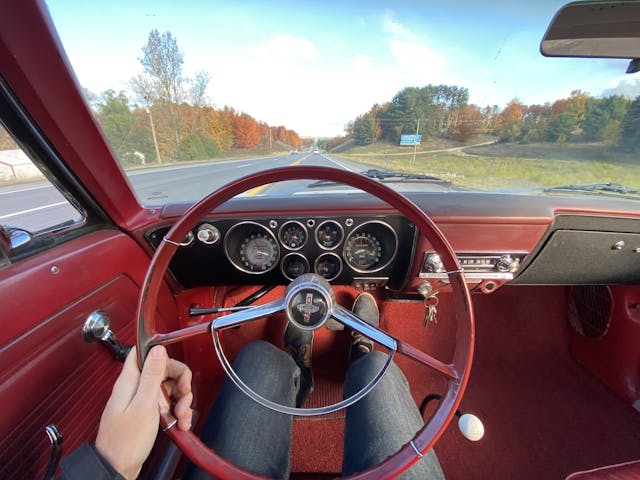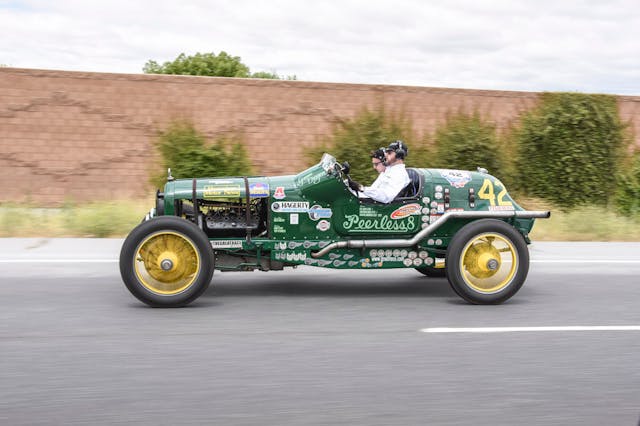What is sound deadening and how does it work?
Of the few things we vintage car folks have to concede to modern car lovers is the fact that our choice of locomotion is loud. All the noise is worth it for the experience, but taking out some with the use of some hidden modern materials is about as controversial an opinion as upgrading to disc brakes. For all the support for sound deadening and damping, there is an awful lot of confusion around the web regarding usage and expectations.
On modern cars it is called NVH: Noise, vibration, and harshness. These three aspects factor into so many points of vehicle design in the modern era. As cars became a near-mandatory part of society, the time we spent in them increased and brought along an expectation that we are comfortable in them. Even a Model T is comfortable when you consider the time it was built.
“What did you say?”
Let’s address the first of the trio: Noise. This is the sound waves emitted from various parts of the car as they function. The lifted Jeep Gladiator next to you on the highway chose those mud terrain tires for function but the side effect is a lot of noise, especially when the tread gets worn. Even highway tread tires make some noise, so no one is immune. There are a multitude of other items on this list including exhaust, heater blower motors, suspension creaks or squeaks…

New cars have all the same noises that we notice on our vintage cars. They are just muffled, insulated, or disguised. Some are just plain quieter too. Insulation for this part of the NVH formula is usually a product that is designed to cut the transfer of sound waves from where they are created to where the driver sits. Paddings and foam layers do the task well but coverage and placement are key as the goal is to cut down on the noise but also not end up in a tiny, mobile recording studio. Even a Jaguar isn’t meant to be Abbey Road.
The whole goal is to cut the oscillations of the sound waves. The power of a sound wave diminishes as it passes through a material, and certain materials like foam, cardboard, leather, and synthetic fabrics, and even the passengers ourselves, absorb and reduce those sound waves before they can get to our ear drums. That is what we perceive as a reduction in noise.

Another huge part of noise control is sealing the outside, well, out. That means weatherstripping. The foam rubber that seals the window to the door and the door to the body are all places where sound and therefore annoying noise can leak into your car. Sound waves will diffract after passing through an opening which causes them to bounce around inside a car and feel even louder.
Why is there a Home Depot link in your car forum?
That’s pretty much it for stuff that makes noise as it functions in your car, but what about stuff that makes noise just from the nature of driving? Sounds funny to say, but we are talking about stuff like the sheet metal of door skins, floor panels, and firewalls. Things like this that have any large flat panels become defacto speakers when the vibrations that come with putting hundreds of spinning parts inside a larger bunch of spinning parts all going down a bumpy road come into play. Things are going to vibrate.

But similar to the thoughts above about changing the sound wave size rather than eliminating it, adding mass will slow the movement. Less shaking, less noise. This is why there is a great debate about sound-damping materials. The most popular options are your Dynamat and Husthmat types brands and the idea is to add mass. Those products come in a foil-backed butyl rubber sheet that can stick to just about any part of the car that can vibrate. If your hands are of the roofing callous kind, this material sounds familiar, but don’t be tempted to go to the home center and grab a stack of asphalt insulation tiles and start sticking it on the floor.

Butyl rubber is less susceptible to both heat and off-gassing. If you think new car smell is bad, imagine the smell of a warm asphalt roof each time you get in the car on a warm summer day. Asphalt would also likely slide down any vertical surface if the car got nice and warm like a summer day in the sun. That could seal off drains in door panels, pool up and make for uneven floors under the carpet, or melt onto wire harnesses and cables making working in the future even more difficult.
The second big debate in this space is coverage. Listen to some people and every square inch covered is the only way it’ll ever work. Here’s the thing though, the science doesn’t back this up—and neither do the manufacturer recommendations. The very companies trying to sell you the stuff typically say to cover 30 percent of available surface area for any noticeable effect, and past 60 percent there is a diminishing return. That’s in direct competition to their bottom line. Why lie?

The science is even simpler. A large panel catches the right harmonic of vibration and is now emitting tiny pressure waves that hit your ear drums. All we have to do is change the frequency that the panel vibrates so it is outside of most normally appearing driving conditions. A thin sheet of rubber and foil puts enough of a kibosh on the party vibes that sheet metal has a dull thud rather than a tinny sound when hit with a stone like in a fender well or floorboard. Larger panels like roof shells or firewalls will quiet down significantly as the panels will move less. Less movement, less noise.
Harshness
All cars fall somewhere between the Beast of Turin and a Rolls Royce Phantom. Anything can improve if you want to really engineer a solution. Does it always make sense in putting a band-aid on a bullet wound? Are any of the add-in sound damping and deadeners sold for vintage cars magic bullets to modern comfort? Hardly, but with proper application and expectations you might enjoy driving your car even more than ever. But remember, that Rolls Royce Phantom has hundreds of pounds of insulation material and engineering that is all focused on separating the occupants from any sign that they are indeed driving an automobile.

Harshness is the combination of how the sounds produced by the car wear on the operator. This one is less quantifiable and more personal. While the noise level can be measured in decibels, harshness is unique to each person. I’ve been able to tolerate weeks driving Hagerty’s 1917 Peerless Green Dragon which is one of the harshest vehicles I’ve spent real time in, yet I find my 2015 Chevrolet Express van in need of more sound deadening and insulation. Different expectations.
This is all to say that insulating your vintage ride can be well worth the effort but be sure you understand what products you are using, how they are designed to work, and what you should expect from them. A full layer of Hushmat brought down the noise in my 1965 Chevrolet Corvair, but my wife still finds it too harsh to enjoy. Her loss, but more importantly not my hearing loss—at least not anymore.
***
Check out the Hagerty Media homepage so you don’t miss a single story, or better yet, bookmark it. To get our best stories delivered right to your inbox, subscribe to our newsletters.



Our 2005 E-150 van has an engine cover in the interior, and when I left it off for a test drive, it was amazing how much it was hiding. I wish that I never did that because now I am sure that my timing chain guides are worn and I am nervous driving it until I replace them. I was blissfully unaware before…